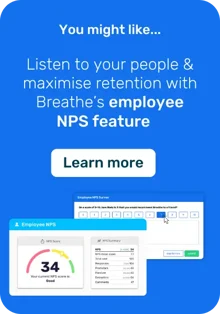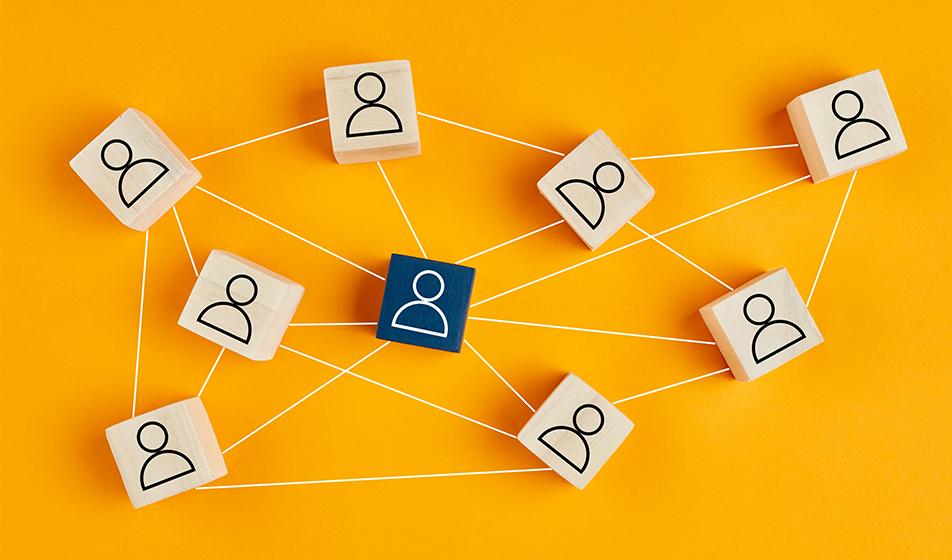5 benefits of using people analytics
1. Raise the profile of HR
Our favourite reason for supporting people analytics is that it makes HR a more powerful force in your SME. And that’s good news for any business that wants to put its people first and create a healthy workplace culture.
It’s true that some people still see the HR function as a “touchy-feely” department that’s more focused on resolving grievances and mopping up tears than driving solid business results.
But - armed with people analytics - HR managers have the power they need to get attention and results.
With undisputed facts and figures, your HR function can start proving the benefit of initiatives and provide persuasive arguments to support recommendations.
2. Get to grips with retention
Improve business performance by getting to the heart of your retention rate and turnover data.
Not only will you be reducing the cost of turnover – estimated at an average of £12,000 per employee - but you’ll also cut the lost productivity suffered when employees quit their jobs.
The simplest place to start is by calculating your business’ turnover rate:
The formula to calculate your business' turnover rate is:
(Number of leavers over given period x 100) / Average total number employed over given period
So, if you employ 500 workers over a year and 20 leave, then the calculation would be:
(20 x 100)/500 = 4% employee turnover rate
Now take this data and compare it to your industry average and split it by employee
group to understand the patterns.Turnover data is most powerful when you review it against other information such as employee exit interviews, training and performance data, payroll data and employee engagement surveys.
Standardised templates, such as an exit interview template will keep the data consistent.
This combination of quantitative and qualitative data highlights details and trends, helping you address gaps in your business that may improve your retention rate and overall employee engagement.
3. Improve health & wellbeing
Health and wellbeing are recognised as a key tool in growing productivity, but it can be difficult to determine whether they’re a problem in your organisation.
Analysing absence data, benchmarking it against your industry and reviewing it over time can give you a better insight into your health and wellbeing performance.
Some HR software calculates your employees’ Bradford factor, helping you identify individual employees and groups of employees who have a higher absence rate.
But the story doesn’t end there - as with all measures in people analytics, the value comes with what you do with this data.
Coupling it with an employee survey or your knowledge about the pressure your team has been under can help you decide what to do as a result.
If for instance, you notice that parents are taking extra time off, then this may indicate they need extra support to care for their children, especially during colds and flu season or during the summer holidays.
Implementing a flexible work policy or better communicating parental leave rights may help your employees better manage their commitments and reduce their stress levels. In turn they’ll be absent less often and more productive when they are at work.
4. Make your recruitment more effective
Using people analytics can help you recruit more effectively.
Instead of firing out job ads to the same channels and recruiters time after time, analyse the success of each recruitment channel.
This will help you understand the cost of hiring and reduce costs where possible. Not only that, but by focusing on recruitment channels that work for your business, you can save yourself money in advertising fees and fill your vacancies more quickly.
And there’s another benefit, too. By analysing your recruitment data and time to hire, you’ll get a more accurate idea of how long it takes to fill gaps in your teams.
This information can help managers plan more effectively and budget for temporary staff if necessary.
5. Help you pay more fairly
Paying your employees more fairly is proven to increase engagement and productivity.
Ultimately, it drives success. What’s more, there’s an increasingly strong push for pay equality driven by the need for larger businesses to publish their gender pay gap.
You can use your payroll data to analyse your gender pay gap. But why stop there? It’s important to ensure all your employees are paid fairly, so consider using the same principle to measure potential pay gaps in ethnicity and disability.
Once you’ve uncovered any discrepancies in your pay equality, you can start addressing the gap and create an action plan.
How HR software can help with people analytics
You’ll be pleased to hear that you don’t need fancy platforms or analytics tools to get started with people analytics. An HR tool such as Breathe gives you a solid starting point to get to grips with analysing your workforce.
Good HR software will help you manage people analytics by centralising your employee data and providing reports on:
-
Absence data
-
Performance and training
-
Recruitment and applicants
With this basic data in one place, you can use a series of calculations to understand your workforce. You can also see how it’s changing over time and how it compares to industry or national standards.
Remember, people analytics are only useful when they're incorporated into business decisions.
Analytics for the sake of analytics will take you nowhere. For the magic to start, you need to investigate the “so what?” that your data is pointing towards and focus on the elements that are most relevant to your business.
This will help you support or evolve your HR and business strategy for greater success and happier employees.
Dig into your own people analytics with Breathe's Employee NPS feature (free on regular Breathe plans or above).








